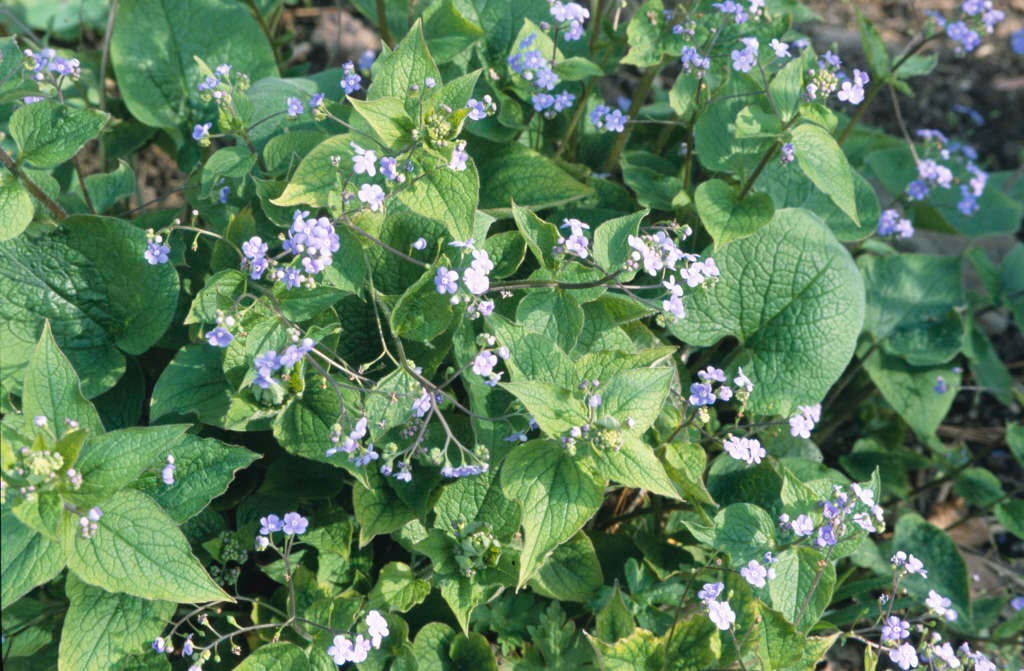Brunnera macrophylla
Siberian bugloss
An herbaceous perennial forming a clump to 45cm, with broad sprays of small, clear blue flowers, followed by large heart-shaped, long stalked leaves
Size
Ultimate height
0.1–0.5 metresTime to ultimate height
2–5 yearsUltimate spread
0.1–0.5 metresGrowing conditions
Moisture
Moist but well–drainedpH
Acid, Alkaline, NeutralColour & scent
| Stem | Flower | Foliage | Fruit | |
| Spring | Blue | Green | ||
|---|---|---|---|---|
| Summer | Green | |||
| Autumn | ||||
| Winter |
Position
- Full shade
- Partial shade
Aspect
North–facing or West–facing or East–facing
Exposure
Sheltered Hardiness
H6Botanical details
- Family
- Boraginaceae
- Native to GB / Ireland
- No
- Foliage
- Deciduous
- Habit
- Clump forming
- Genus
Brunnera are rhizomatous herbaceous perennials with large, ovate or heart-shaped basal leaves and sprays of small bright blue flowers in spring
- Name status
Correct
- Plant range
- Turkey to Caucasus
How to grow
Cultivation
Best grown in moderately fertile, humus-rich soil that is moist but well-drained. A cool site in partial shade or shade is preferred
Propagation
Propagate by division in early spring or take root cuttings in winter
Suggested planting locations and garden types
- Cottage and informal garden
- City and courtyard gardens
- Low Maintenance
- Banks and slopes
- Flower borders and beds
- Underplanting of roses and shrubs
- Ground cover
Pruning
No pruning required
Pests
Generally pest-free
Diseases
Generally disease-free
Get involved
The Royal Horticultural Society is the UK’s leading gardening charity. We aim to enrich everyone’s life through plants, and make the UK a greener and more beautiful place.

